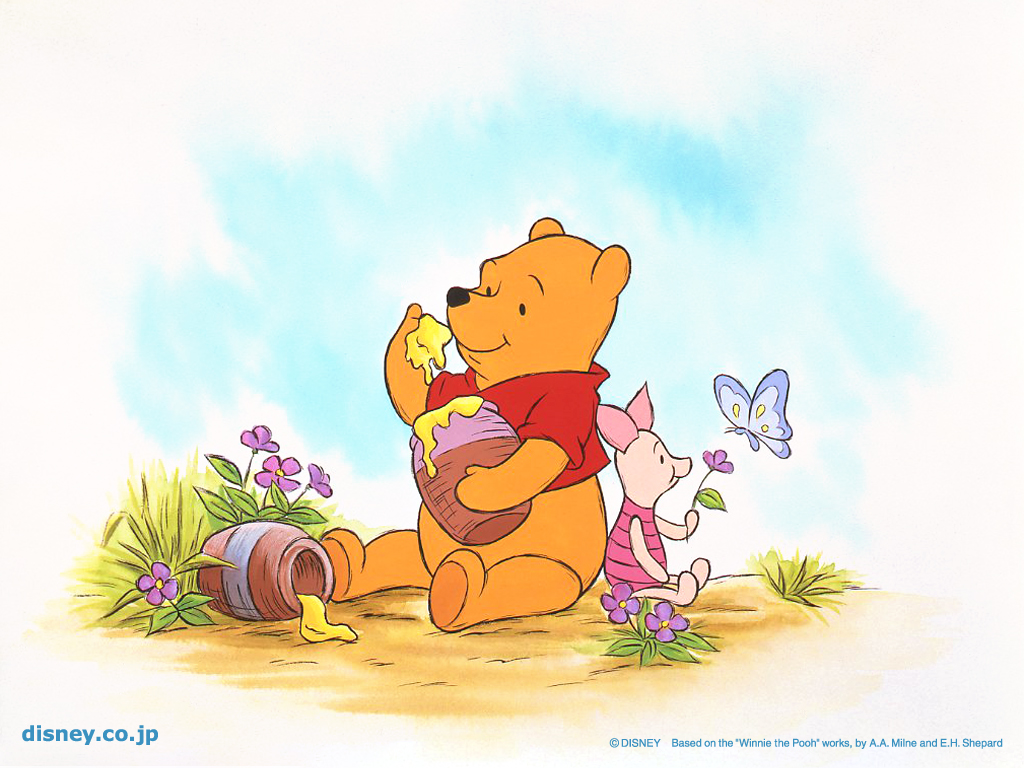Winnie The Pooh Wallpaper - Winnie the Pooh and His History
Winnie-the-Pooh is a popular children's book character created by author A.A Milne. The image of Pooh bear has been used for cuddly soft toys, clothes and even animated feature films. Many people do not know Winnie-the-Pooh was actually based on a real bear called "Winnipeg" who his son Christopher Milne liked very much. It's a touching story which caught the hearts and minds of many people after the First World War.
Christopher Robin Milne often went to see a Canadian Black Bear called Winnie at London Zoo. The bear was originally given to the Zoo on a long loan basis by Harry Colebourn. Lieutenant Colebourn was on his way to England at the time to take part in World War I when he bought the bear cub for $20 from a hunter in White River, Ontario, who had just trapped and killed its mother.
He named the bear "Winnie" after his hometown of Winnipeg, Canada. Winnipeg the bear became very popular with soldiers of the 2nd Canadian Infantry Brigade and travelled with them as their mascot. When they arrived in England it was clear that Winnipeg would not be able to accompany the Infantry Brigade any further as they had to move on to France. Harry Colebourn took the bear to the Zoological Gardens in London so they could look after it while he was away. In 1919 he returned to collect the bear and realised that it had become very popular with staff and visitors, so he decided to donate the bear to the zoo. Winnie the bear was a popular attraction at London Zoo until it died in 1934.
Christopher Robin Milne first saw Winnie on an excursion to the zoo in 1924 and actually spent time with it in the bear cage. This experience obviously had a great affect on Christopher and he went back to visit Winnie on many occasions, which led to A.A Milne keeping a journal about visiting the bear with his son. The journal entries also included other popular characters from the books such as Eyeore, Tigger, Kanga and Roo, which were his son's cuddly soft toys. Other characters in the books such as Owl and Rabbit were based on animals on Milne's country estate.
A young artist by the name of Ernest Shepard created the illustrations for the books which were inspired by A.A Milne's journal entries. The first was called "Winnie-the-Pooh" which went into print on October 14th 1926. A second book was released in 1928 called "The House at Pooh Corner". However poems and verses about the bear can also be found in other children's books called "When We Were Very Young" in 1924 and "Now We are Six" in 1927, which were also written by A.A Milne and illustrated by Ernest Shepard. All of the stories take place in Ashdown Forest which was on and around Milne's estate in Sussex.
A big fan of Milne's Winnie-the-Pooh books was Walt Disney who made the first animated theatrical featurette of the famous bear and his exploits in 1966 called the "Winnie the Pooh and the Honey Tree". It was at this time the hyphens were dropped from the name. Other films have been made which include "Pooh's Grand Adventure" in 1997 and "The Tigger Movie" in 2000. In 2003 "Piglet's Big Movie" was also released followed by "Pooh's Heffalump Movie"in 2005. In fact an all new full length animated Winnie the Pooh movie is in production and is slated for release in 2011.
Winnie the Pooh or Edward bear as it is sometimes known as picked up the Pooh part of its name from a swan that Milne's son once met on holiday. However, in the first chapter of "Winnie-the-Pooh" Milne does offer an explanation of his own as to why the bear is sometimes simply called "Pooh".
"But his arms were so stiff... they stayed up straight in the air for more than a week, and whenever a fly came and settled on his nose he had to blow it off. And I think - but I am not sure - that that is why he is always called Pooh."
Subscribe to:
Post Comments (Atom)









No comments:
Post a Comment